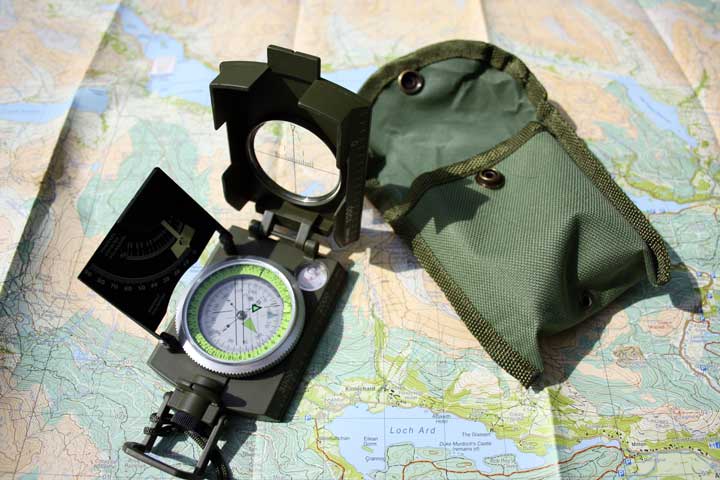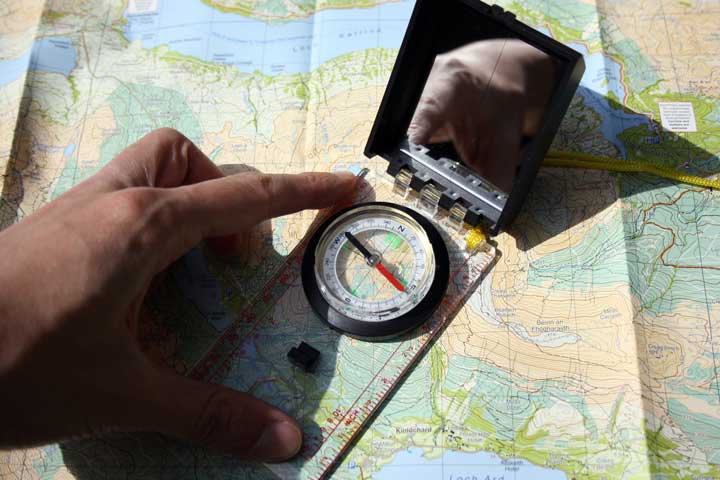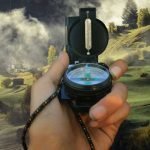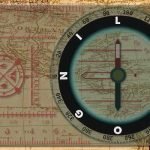In order to choose the right compass for you, it’s important to take into account the terrain in which you will be exploring and your ability to read one.
Types of Compasses
Prismatic Compass: Accurate Sophistication
Perhaps the most sophisticated of all compasses, these devices are designed to provide the most accurate navigation. These compasses get their name because they use a prism to take observations more accurately. Prismatic compasses take a bearing in respect to magnetic north.
Surveyor’s Compass: A Common Choice
Also known as circumferentor, a surveyor’s compass is used to measure horizontal angles. These compasses determine the magnetic bearing of a line towards magnetic north. Surveyor compasses are used specifically for surveying and are not popular tools for navigation.
Lensatic Compass: Military Tough
These are some of the toughest compasses you can find. They are so resistant in fact, that they are the chosen compasses to use in the military. What makes these compasses so sturdy is that they are made of three main parts: a base that holds the compass, a cover that protects it and a rear lens that flips out as the compass is opened which is used to read the dial.
Although they are tough indeed, you would need to use a protractor and a ruler additionally to the compass in order to be able to to take a bearing on a map.

Baseplate Compass: Affordable and Perfect to Read a Map
This compass is mounted on top of a see-through plastic covering that has all sorts of tools and elements to help you navigate more effectively and read a map with more accuracy. However, although it is good for plotting purposes, it would not be the right type of compass to sight the distance of a distant object.
These are the most common types of compasses that are used for navigation, but also the less sturdy ones as the baseplate could easily break due to the nature of the material used for the clear plate.

Card Compass: Magnetic Marine Navigation
The card compass, also known as a marine compass, has a fixed needle with a moving compass card, opposite to the rest of the compasses. The design of this compass is different because it is most used in ships and boats, which is why the card is static as it absorbs the motion from the boat.
This fixed needle design often makes it easier to read a card compass than a needle compass.
Thumb Compass: A Competitor’s Choice
These compasses get their names as they go attached to the user’s thumb for ease of use on the go. Normally competitors of various sports use these so that they can manage a map and compass simultaneously without losing much time and while on the move.
Gyrocompass: Non-Magnetic Sea Navigation
Gyrocompasses are used mostly for sea navigation because they are non-magnetic. Because of this, these compasses maintain the direction of true north, and not magnetic north, with a gyroscope, which works by holding its axis parallel to the earth’s axis of rotation.
Electronic Compass: Accuracy Through Technology
These compasses can be found integrated into almost all modern electronic devices, from cell phones to iPads and tablets. They provide amazingly accurate readings and commonly have various special features, however they do require a power source to function, which may not be ideal for prolonged outdoor use.
Learning to Use a Compass
Once you have learned the difference between each type of compass, a natural second step is to get acquainted with the anatomy of a compass and to learn how to navigate with this great tool.





Very good analysis here. I will keep following more of your posts.
Thank you Zoe, really glad you enjoyed it, you can take a look at the other articles, there are interactive images as well.
I have hiked with this lensatic military compass. I changed its declination to orient topographic maps using this.
Awesome, thanks for sharing